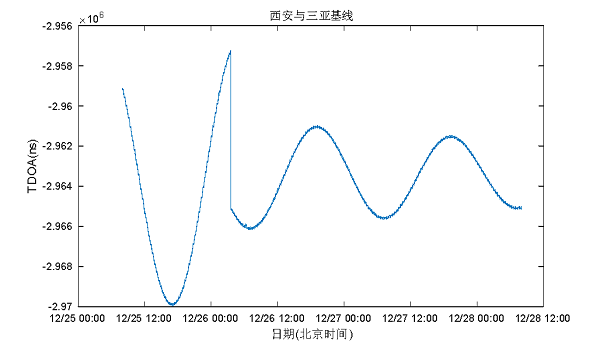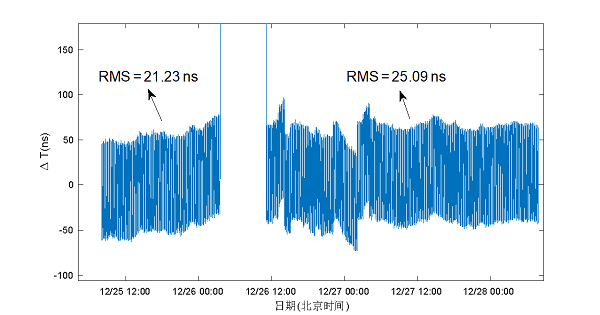Recently, digital satellite TV timing system, proposed and established by the National Time Service Center(NTSC) of the Chinese Academy of Science (CAS), has successfully switched TV satellite. The timing accuracy after switching is basically the same as that before, is less than 50ns (RMS). The switching of TV satellite further verifies that the digital satellite TV timing system has better timing service capability and timing accuracy.
Digital satellite TV timing system is a timing system proposed and constructed by NTSC, and the corresponding monitoring system has established in 2022. The digital satellite TV timing system makes full use of the existing radio and television infrastructure and radio frequency resources. It does not need to launch satellites or forward specific signals, nor occupy precious radio spectrum resources. On the premise of not affecting the normal broadcast of existing radio and television programs, it can achieve high-precision timing, and its timing accuracy is less than 50ns (RMS).
The satellite TV signal used in the digital satellite TV timing system comes from Jiangsu Satellite TV forwarded by ChinaSat 6B which has already reached the planned service life. ChinaSat 6E satellite officially took over ChinaSat 6B in the early morning of December 26, 2023 Beijing time, and continued to provide TV broadcasting and other services. At that time, the satellite observed by the digital satellite TV timing system will also be switched from the ChinaSat 6B to the ChinaSat 6E.
During switching period, the digital satellite TV timing monitoring system detected that the carrier noise ratio(C/N) of TV signal from Sanya monitoring station changed significantly from 1 a.m. to 4 a.m., but all of them were within the normal range, as shown in Figure. 1.

Figure. 1 C/N of TV signal from Sanya monitoring station
Meanwhile, the system also detected a specific time for satellite switch, which was at 3:30:09 AM Beijing Time on December 26, 2023. At this moment, there were microsecond-level interruptions in the Time Difference of Arrival (TDOA) for the TV signals between the Xi'an and Changchun baselines, as well as the Xi'an and Sanya baselines, as shown in Figures 2 and 3.

Figure. 2 TDOA between Xi’an and Changchun baselines

Figure. 3 TDOA between Xi’an and Sanya baselines
The data from Xi’an monitoring station shows that the timing accuracy after switching the satellite is basically the same as that before, and both are less than 50ns (RMS).

Figure. 4 Time difference monitoring results from Xi'an monitoring station
Digital satellite TV timing system is independent of the existing satellite navigation system, while ensuring the normal broadcast of radio and television signals, it provides an independent high-precision timing method, avoiding the risk caused by over-reliance on global navigation satellite system (GNSS), and can provide time services for various industries.
The satellite replacement has effectively tested the operational service capability of the digital satellite TV timing system. The system has important reference value for expanding the existing time service system and developing new high-precision timing method.
It is of great significance to improve the use efficiency of radio and television infrastructure, enrich and perfect the establishment and maintenance of the resilience of the national timing system.
 Print
Print